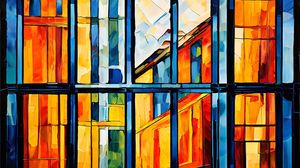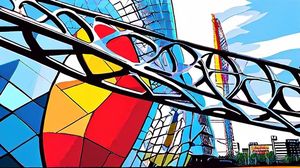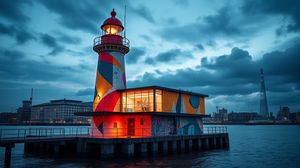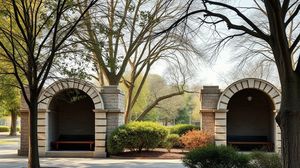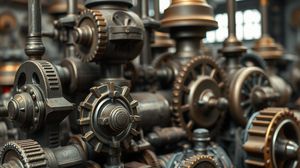
Abbey Mills Pumping Station, located in the area commonly associated with Stratford in London, stands as a marvel of Victorian engineering. Built in the mid-19th century, it was designed by the prominent architect Joseph Bazalgette as part of his revolutionary sewer system for London. The station's impressive structure and architectural finesse have earned it the nickname "the Cathedral of Sewage".
The pumping station's design is a striking example of Moorish Byzantine architecture, which is quite unusual for a utility building. Its ornate exterior, featuring intricate brickwork and ironwork, makes it a notable landmark beyond its functional purpose. The building's grandeur belies its utilitarian role in the city's infrastructure.
One of the most intriguing aspects of Abbey Mills is its continued relevance more than a century after its construction. While no longer the primary station, parts of it remain in use today, coexisting alongside more modern facilities. This blend of past and present highlights the robust engineering of the Victorian era.
The station was initially powered by colossal steam engines, indicative of the industrial advances of the time. These engines were capable of lifting millions of gallons of waste water daily from the city's sewers, preventing the reoccurring public health crises in London at the time, such as cholera outbreaks.
Though it is generally closed to the public, Abbey Mills Pumping Station opens its doors during special events such as Open House London, providing visitors a unique glimpse into its fascinating history and architecture. This makes it an exclusive attraction, weaving interest from both history buffs and architecture enthusiasts alike.
Abbey Mills Pumping Station has earned a Grade II* listing, acknowledging its architectural and historical significance. This designation helps preserve its unique character and ensures that it remains a part of London's evolving story.
Interestingly, the station was featured in the music video for the song "Two Tribes" by the band Frankie Goes to Hollywood. This piece of pop culture trivia highlights the station's iconic status, making it more than just a piece of industrial history.

Making the Most of Your Visit:
If you're planning to visit during one of the Open House London weekends, make sure to arrive early. The Abbey Mills Pumping Station is a bit of a hidden gem, and when it opens its doors, it can attract quite a crowd of enthusiasts eager to explore this historical site. Getting there early can help you avoid long queues and give you more time to enjoy the building's stunning architecture.
Keep an eye out for the details in the architecture! The Moorish Byzantine style of Abbey Mills is not something you see every day in London. Take time to admire the intricate brickwork and the ornamental detailing. It's these features that contribute significantly to its nickname as the "Cathedral of Sewage." You might want to bring a camera as the exterior offers some fantastic photo opportunities.
Check if any guided tours are being offered. If available, these tours can offer fascinating insights into the history and engineering feats of the pumping station. They're an ideal way to understand more about Joseph Bazalgette's pioneering work and the Victorian era's influence on modern urban infrastructure.
If you're interested in industrial history, spend some time learning about the transition from steam to electric power at the station. This is a significant part of the story of London's sewage system evolution and speaks volumes about the technological advances of that era.
Take the time to explore the surrounding area. Stratford has undergone tremendous transformation, especially after the 2012 Olympics. The juxtaposition of old and new architecture in the area provides an enriching urban landscape for those interested in how cities develop and change over time.

Visiting Times & Costs:
Abbey Mills Pumping Station is generally closed to the public. However, it can be visited during special events such as Open House London, which typically takes place in September. These events offer a rare opportunity to explore the site, and entry is usually free during these occasions.
As the opening times are limited to specific events, it is important to check in advance for any announcements on event dates and accessibility.
Entrance during special events is generally free, but there may be recommended donations or optional paid tours that offer additional insights into the site's history and engineering.
Accessibility may vary depending on the event organization. The historic nature of the building could present challenges for visitors with mobility issues, so it's advisable to verify accessibility arrangements prior to visiting during Open House London events or other special openings.

Address & Map:

Nearby:

